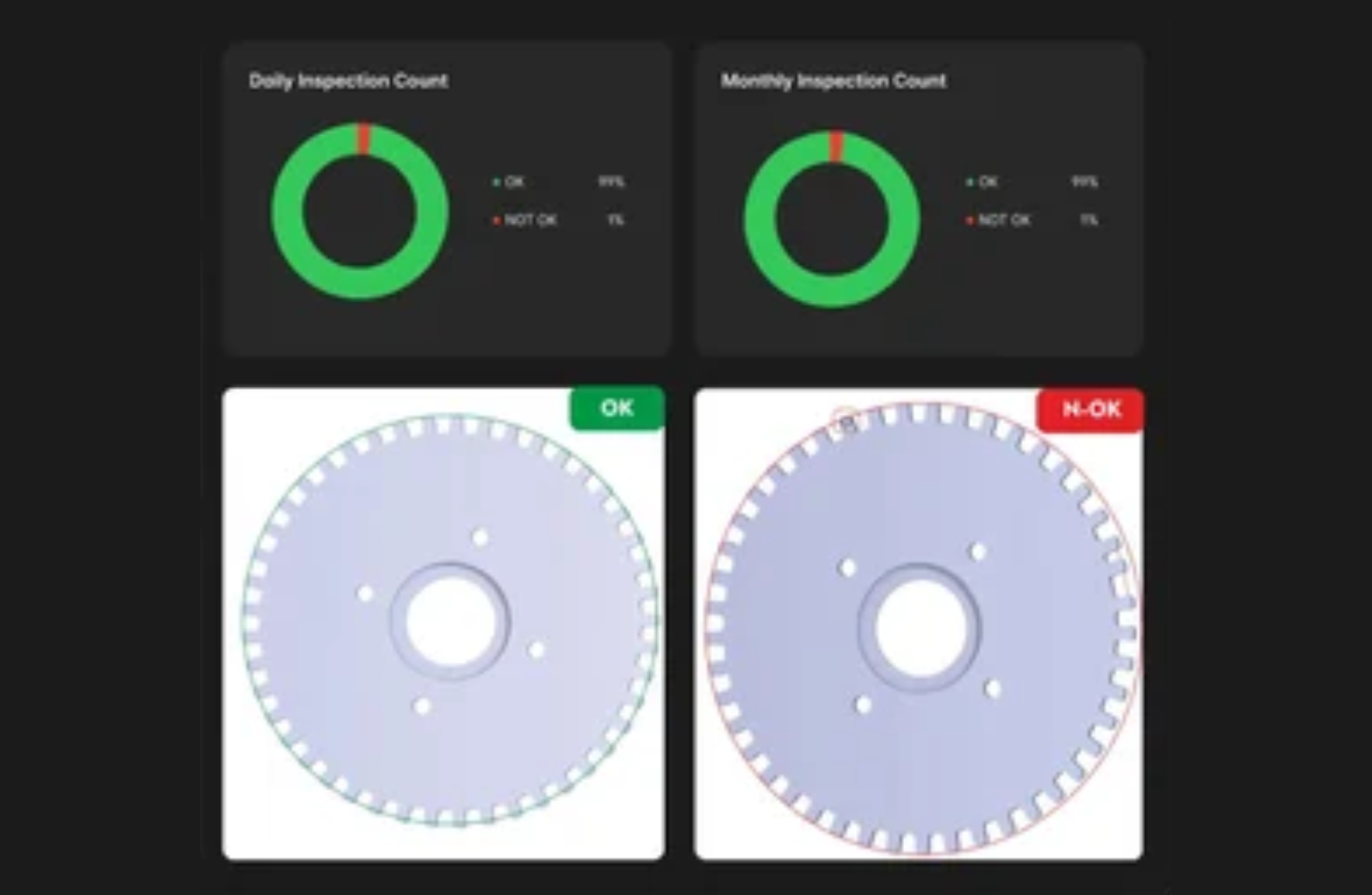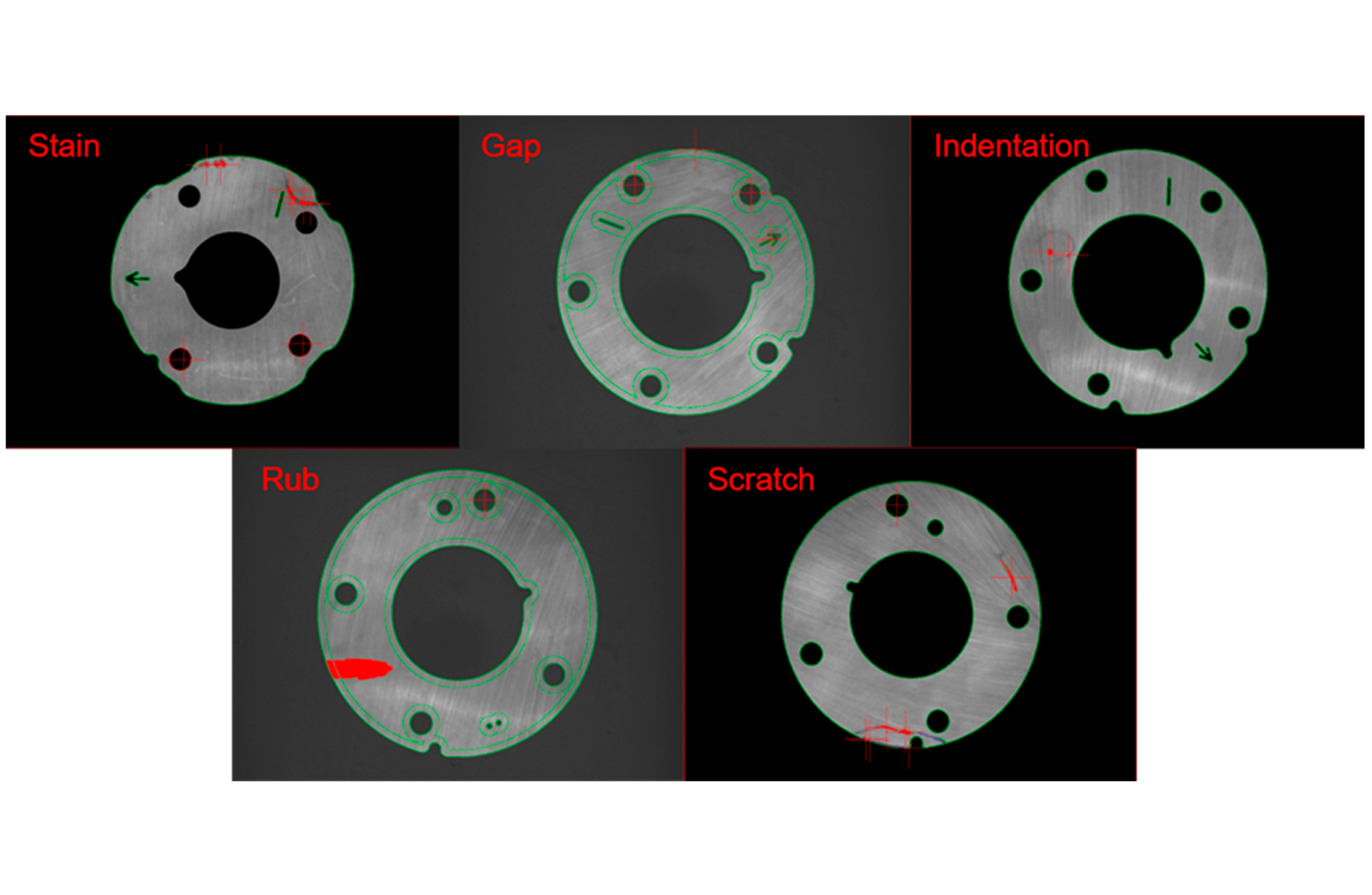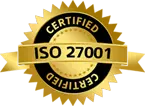Metal Stamped Parts Inspection Automation with Machine Vision AI
Published on: May 16, 2025

Written by: Content team, Intelgic
Metal Stamped Parts Inspection Automation with Machine Vision AI
In today’s advanced manufacturing landscape, precision, consistency, and speed are no longer just competitive advantages — they are absolute necessities, especially in the field of metal stamping. These stamped components serve as critical building blocks in industries ranging from automotive and aerospace to electronics and heavy industrial machinery, where even the smallest imperfection can lead to costly failures or safety risks. As production lines operate at increasingly higher speeds and volumes, maintaining flawless output becomes a formidable challenge. Traditional inspection techniques — often manual, time-consuming, and prone to human error — are simply not equipped to handle the complexity and scale of modern metal stamping. This is where Machine Vision AI emerges as a transformative force, revolutionizing the inspection process with automated intelligence, real-time analysis, and unmatched accuracy in defect detection.

Common Defects in Metal Stamped Parts
Metal stamping processes, though highly efficient, can introduce a range of defects, including:
- Burrs and Sharp Edges
- Surface Scratches and Dents
- Deformation or Warping
- Punching Errors
- Cracks and Fractures
- Coating or Finish Imperfections
- Incomplete Forming or Misalignment
Complexities in Inspecting Metal Stamped Parts
- High Reflectivity of Metal Surfaces
The shiny, reflective nature of metal causes intense glare under standard lighting, which obscures fine surface defects and makes accurate detection difficult.
- Varying Part Shapes and Sizes
Metal stamped components often have intricate geometries, including curves, holes, and recesses. This diversity makes consistent inspection challenging without adaptable systems.
- High-Speed Production Lines
Inspection must keep up with rapid production speeds, requiring real-time analysis and immediate decision-making to avoid bottlenecks or defective output.
- Microscopic Defect Dimensions
Many defects are only a few microns in size — far too small to be reliably detected by the human eye or conventional vision systems.
- Need for Multiple Inspection Angles
Single-camera systems can miss critical defects located on hidden or complex surfaces, necessitating multi-angle coverage for thorough inspection.
- Limitations of Manual and Traditional Systems
Manual inspection and conventional vision technologies struggle to deliver the necessary speed, accuracy, and consistency. This often leads to undetected defects, increased rejection rates, and compromised product quality.

How Customized Machine Vision AI Solves These Challenges
A customized Machine Vision AI solution effectively addresses these inspection challenges by offering a comprehensive, adaptive system specifically designed for the unique demands of complex metal parts. These solutions integrate advanced imaging hardware, intelligent defect recognition algorithms, and real-time processing capabilities. The result is a highly efficient inspection process that not only detects defects with exceptional accuracy but also adapts seamlessly to different part geometries and production speeds.
Area Scan Cameras
To achieve comprehensive and accurate inspection, high-resolution area scan cameras play a crucial role. These advanced imaging devices are capable of capturing full-frame, high-detail images of the entire surface of each metal stamped part. Unlike line scan systems that inspect parts line by line, area scan cameras take in the complete visual field in a single shot, allowing for the detection of even the most minute defects—whether they are on flat surfaces, edges, or in recessed areas. This ensures that no imperfection goes unnoticed, regardless of its size, shape, or location on the part. Their versatility and precision make them ideal for inspecting a wide range of stamped components with varying geometries.
Advanced Illumination:
Lighting is one of the most critical components in machine vision systems, particularly when inspecting highly reflective materials like metal stamped parts. Advanced illumination techniques help overcome visual challenges and enhance defect detection accuracy. Below are two key methods used to optimize inspection results:
Structured Lighting
- Projects patterned light (such as grids or lines) onto the surface of the metal part.
- Highlights surface variations like dents, bumps, warping, or deformations that may not be visible under uniform lighting.
- Enhances depth perception and brings out fine texture changes, improving the detection of subtle surface flaws.
Backlighting
- Illuminates the part from behind, creating a strong silhouette effect.
- Makes it easy to detect edges, holes, cutouts, and dimensional discrepancies with high clarity and contrast.
-
Ideal for identifying shape-related defects and ensuring critical dimensions are within tolerance.
AI Software for Intelligent Inspection
The heart of an automated metal stamped parts inspection system is its AI-powered software. This intelligent software analyzes the captured images in real time, leveraging advanced algorithms to detect and classify defects with high accuracy. Its flexibility allows customization to meet specific production requirements, making it a crucial component for ensuring consistent quality.
Key Features of AI Inspection Software
- Real-Time Image Processing
Instantly analyzes images captured by cameras, delivering immediate feedback on part quality. - Accurate Defect Detection and Classification
Uses deep learning models to identify a wide range of defects, including minute surface flaws and dimensional errors. - Customizable Defect Recognition
Can be trained to recognize customer-specific defect types and apply tailored tolerance limits. - Comprehensive Defect Logging
Automatically records and categorizes defects, creating detailed traceability reports for quality control and compliance. - Adaptive Learning
Continuously improves detection accuracy by learning from new defect patterns and operator feedback. - Seamless Integration
Compatible with existing manufacturing execution systems (MES) and programmable logic controllers (PLC) for synchronized line control.
Inspection Workflow for Stamped Metal Parts
- Initial Image Capture
Multiple high-resolution cameras capture detailed images of each stamped metal part from various angles to ensure full surface coverage. - Advanced Illumination Setup
Structured lighting and backlighting techniques are applied to highlight surface defects, dimensional inaccuracies, and hidden features such as holes or cutouts. - Real-Time AI Defect Detection
Captured images are instantly processed by AI-powered software that identifies, classifies, and localizes defects such as cracks, burrs, scratches, dents, and dimensional deviations. - Automated Decision-Making and Sorting
The system applies preset tolerance criteria and automatically segregates defective parts from good ones using rejection mechanisms, minimizing human intervention. - Data Logging and Traceability
Every inspection result is recorded in a comprehensive database, facilitating quality traceability, compliance reporting, and trend analysis over time. - Integration with Manufacturing Systems
Inspection data and control signals are synchronized with MES and PLC systems, allowing seamless communication, centralized monitoring, and coordinated line control. - Continuous Workflow Optimization
Feedback from inspection data helps refine AI models and production parameters, driving continuous improvements in quality and efficiency on stamping lines.
Benefits of Machine Vision AI for Metal Stamped Parts
Machine Vision AI offers transformative advantages in the inspection of metal stamped parts, delivering unparalleled precision and efficiency throughout the manufacturing process.
- 100% Automated Inspection
The system operates continuously without human intervention or fatigue, ensuring consistent inspection quality around the clock and significantly increasing throughput.
- Unmatched Accuracy
Leveraging advanced AI algorithms, the technology detects even the smallest microscopic defects that are often missed by traditional methods, ensuring only flawless parts proceed down the line.
- Scalable and Flexible
Easily configurable to accommodate new part designs, changing inspection criteria, and evolving production demands, allowing manufacturers to adapt quickly without extensive reprogramming.
- Real-Time Feedback
Provides immediate insights into quality issues, enabling proactive adjustments to machinery and processes that reduce downtime and prevent defect propagation.
- Cost Reduction
By minimizing scrap rates, rework, and warranty claims, the system significantly lowers production costs and enhances overall profitability.
- Data-Driven Insights
Detailed defect data and trend analysis empower manufacturers to implement continuous quality improvements, optimize production parameters, and make informed decisions for long-term success.
Intelgic: Revolutionizing Metal Stamped Parts Inspection with Next-Gen AI Vision
At the cutting edge of automated inspection technology, Intelgic integrates advanced machine vision hardware with powerful AI algorithms to revolutionize the quality control of metal stamped parts. Intelgic’s highly customizable inspection systems provide reliable, real-time defect detection at scale, enabling manufacturers to uphold the strictest quality standards while significantly cutting inspection costs and minimizing production downtime.
From simple flat metal blanks to complex, intricately contoured stamped components, Intelgic’s Machine Vision AI platform is engineered to adapt seamlessly to the specific requirements of your production line.
Looking to enhance the accuracy, speed, and efficiency of your metal stamping inspection? Partner with Intelgic to deploy a tailored machine vision solution designed to meet your exact needs.

